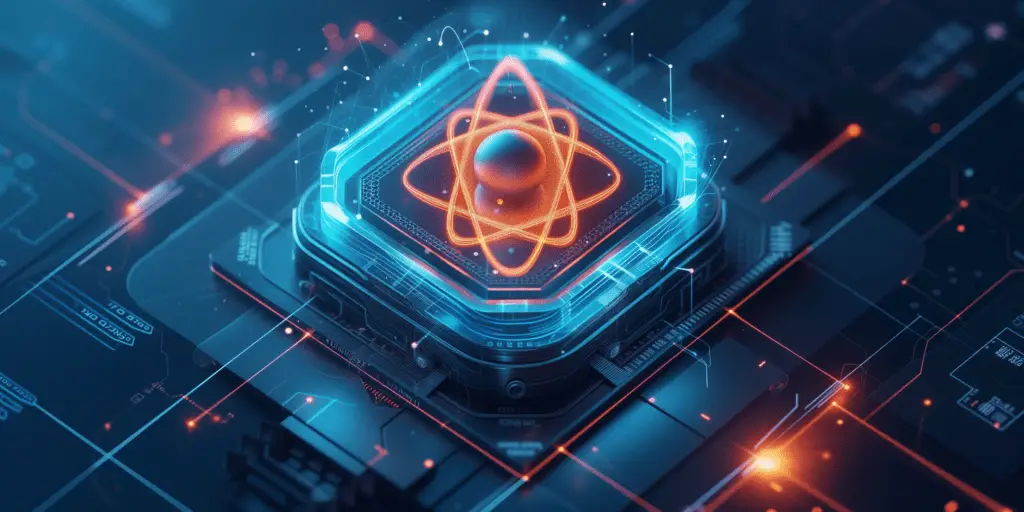In a groundbreaking intersection of artificial intelligence and nuclear fusion technology, researchers at Princeton University’s Andlinger Center, in collaboration with the Princeton Plasma Physics Laboratory , have pioneered a novel application of AI to enhance the stability of plasma within nuclear fusion reactors.
This innovative approach marks a significant milestone in the quest for harnessing fusion energy—a process that emulates the sun’s power generation mechanism—on Earth. By leveraging AI to predict and mitigate plasma instabilities, the team has taken a crucial step forward in making fusion power a practical and sustainable energy source.
As the world grapples with escalating energy demands and the urgent need for clean energy solutions, this breakthrough not only propels fusion research forward but also captures the attention of leading technology companies.
Companies like Helion Energy have already embarked on ambitious projects such as Polaris, attracting keen interest and investment from the tech sector, signaling a burgeoning, symbiotic relationship between AI and nuclear fusion.
This relationship not only aims to address the technical challenges of achieving stable, efficient fusion energy but also reflects a strategic response to the energy-intensive needs of advancing AI technologies.
The Princeton Experiment
At the heart of a transformative leap in nuclear fusion research is an experiment conducted by a dynamic team at Princeton University’s Andlinger Center for Energy and the Environment in close collaboration with the Princeton Plasma Physics Laboratory.
This experiment has underscored the potential of artificial intelligence to solve one of the most daunting challenges in the field plasma stability.
The experiment was born out of a cross-disciplinary collaboration that brought together engineers, physicists, and data scientists. Their goal was to address the inherent volatility of plasma within fusion reactors, a critical barrier to harnessing fusion energy reliably and efficiently.
Nuclear Fusion energy, mirroring the process that powers the sun, involves fusing atomic nuclei at extremely high temperatures and pressures to release energy. The key to achieving controlled fusion on Earth lies in the ability to maintain a stable plasma state within the confines of a tokamak reactor—a complex device often likened to creating a “star in a jar.”
Plasma, in the context of Nuclear fusion, is a hot, charged state of matter consisting of free electrons and atomic nuclei that requires precise conditions to remain stable. Tokamak reactors, characterized by their toroidal design, use powerful magnetic fields to confine plasma.
Maintaining the necessary equilibrium within these reactors is a formidable task due to plasma’s propensity for instability, which can lead to disruptions and potential damage to the reactor’s infrastructure.
The Princeton team’s approach centred around the development of an AI model capable of predicting the onset of “tearing mode instabilities,” a specific type of plasma disruption, up to 300 milliseconds in advance.
This foresight is crucial, as it provides a window of opportunity to adjust reactor parameters to avert instabilities. The model was trained on historical data from past experiments conducted at the DIII-D National Fusion Facility in San Diego, focusing on real-time plasma characteristics to inform predictions.
Utilizing a deep neural network for prediction, the researchers then employed a reinforcement learning algorithm. This algorithm iteratively refined control strategies through simulated experiments, learning to optimize power levels while preventing instabilities.
The RL approach mirrors the concept of flight training, where a pilot undergoes simulation-based learning before taking control of an actual aircraft, emphasizing a gradual, informed learning curve for the AI.
Upon validating the AI controller’s effectiveness in simulations, the team proceeded with real-world tests at the DIII-D tokamak. The results were promising, as the AI successfully manipulated reactor parameters to mitigate instabilities, demonstrating its potential to enhance plasma stability in operational fusion reactors significantly.
The implications of this experiment extend beyond the immediate success in controlling plasma stability. By integrating AI into the operational framework of nuclear fusion research, the Princeton team has opened new avenues for overcoming longstanding challenges in the field.
Their findings, published in the prestigious journal Nature, not only represent a significant scientific achievement but also a crucial step towards realizing the dream of clean, sustainable, and virtually limitless fusion energy.

Understanding Tokamaks and AI’s Role
The pursuit of nuclear fusion as a clean, virtually unlimited source of energy has led researchers to focus on the development and optimization of tokamak reactors. These complex devices are at the forefront of efforts to harness the power of fusion on Earth.
The introduction of artificial intelligence into this field has marked a significant turning point, offering innovative solutions to age-old challenges and paving the way for advancements that could make fusion energy a practical reality.
A tokamak is a device designed to achieve controlled thermonuclear fusion power. It is characterized by its toroidal chamber, where plasma — a superheated, ionized gas consisting of nuclei and free electrons — is contained and controlled using powerful magnetic fields. The magnetic confinement in tokamaks is critical for maintaining the extreme conditions necessary for fusion reactions, where atomic nuclei combine to form heavier nuclei, releasing energy in the process.
One of the most significant challenges in fusion research is maintaining plasma stability within tokamak. Plasma, being highly reactive and volatile, can undergo various forms of instabilities, leading to disruptions that can halt fusion reactions and potentially damage the reactor.
Controlling these instabilities requires precise manipulation of the magnetic fields and an in-depth understanding of plasma behaviour, which has traditionally been a complex and computationally intensive task.
The advent of AI technologies has introduced a novel approach to tackling the issue of plasma stability. By leveraging deep learning and reinforcement learning algorithms, researchers can now predict and counteract potential instabilities before they compromise the fusion process.
This proactive approach to plasma control represents a significant departure from previous methods that primarily focused on responding to instabilities after they had already occurred.
AI models, trained on vast amounts of experimental data, can predict the onset of specific instabilities, such as tearing mode instabilities, with remarkable accuracy. These predictions allow for the adjustment of operational parameters in real time, ensuring that the plasma remains stable and that the conditions necessary for fusion are maintained.
Reinforcement learning algorithms go a step further by not just predicting instabilities but also learning optimal control strategies through simulated environments. This iterative learning process enables the AI to discover effective ways to manage plasma behaviour, improving its ability to maintain high-power levels and stable conditions over time.
The practical application of AI in controlling plasma stability has been successfully demonstrated in tokamak experiments, notably at the DIII-D National Fusion Facility. These achievements highlight the potential of AI to revolutionize fusion research, offering more reliable and efficient ways to achieve and maintain the conditions necessary for fusion.
As AI continues to evolve and integrate with fusion technology, the dream of achieving sustainable, clean energy from nuclear fusion becomes increasingly tangible.
The synergy between tokamaks and AI not only addresses the technical hurdles of fusion energy but also accelerates the path towards its commercial viability, promising a future powered by an abundant and environmentally friendly energy source.
The Future of AI in Nuclear Fusion
The integration of Artificial Intelligence into nuclear fusion research represents a paradigm shift, offering innovative solutions to longstanding challenges and significantly accelerating the path toward viable fusion energy.
As AI technologies continue to advance, their role in fusion research is poised to expand, driving efficiencies, enhancing predictive capabilities, and ultimately facilitating the realization of fusion as a sustainable and abundant source of clean energy.
One of the most promising aspects of AI’s future in Nuclear fusion research is the enhancement of predictive analytics. AI models will become increasingly sophisticated, capable of anticipating a broader range of instabilities and reactor dynamics with greater accuracy and further in advance.
This improvement will allow for more precise control strategies, minimizing disruptions and optimizing fusion conditions continuously.
Future AI systems in Nuclear fusion research will likely evolve into more adaptive and autonomous entities capable of self-improvement through continuous learning from real-time data.
These systems will refine their algorithms based on actual reactor performance, leading to progressively more effective control strategies. Such adaptability will be crucial in managing the complex and dynamic environments of Nuclear fusion reactors, especially as we push the boundaries of plasma physics and reactor design.
AI’s potential to learn and generalize across different tokamak designs and configurations will be a game-changer. By transferring knowledge gained from one reactor to another, AI can significantly reduce the time and resources required to optimize new fusion systems.
This capability will facilitate a more collaborative global fusion research environment, where insights and advancements can be shared and applied universally, speeding up the development of effective fusion energy solutions.
The future of AI in Nuclear fusion research will also see deeper integration with other cutting-edge technologies, such as quantum computing and advanced materials science. Quantum computing could revolutionize the way AI solves complex optimization problems in plasma control, offering solutions far beyond the capabilities of classical computing.
Advancements in materials science, informed by AI analytics, will lead to the development of better reactor components that can withstand the extreme conditions of fusion for longer periods, improving reactor efficiency and safety.
As AI becomes more integral to fusion research and other sectors, its own energy consumption will become an important consideration. The symbiotic relationship between AI and Nuclear fusion energy offers a solution.
As fusion becomes a viable energy source, it can provide the clean, high-capacity power needed to support the computational demands of AI, creating a sustainable cycle of innovation and energy production.
The role of AI in Nuclear fusion research is not just about enhancing scientific understanding and control of fusion processes; it’s also about accelerating the journey towards commercial fusion energy. By improving the efficiency, reliability, and safety of fusion reactors, AI helps reduce the barriers to commercialization, promising a future where fusion energy can be a cornerstone of the global energy landscape, powering economies and helping to mitigate climate change.

Bridging the Energy Divide
The relentless advance of artificial intelligence and the quest for nuclear fusion energy are converging in ways that promise to redefine our energy landscape. This convergence is not merely a testament to human ingenuity but a necessary evolution to address the escalating energy demands of a world increasingly dependent on digital and AI technologies.
As we stand on the brink of this new era, the symbiotic relationship between fusion and AI is emerging as a pivotal force in bridging the energy divide, offering a pathway to sustainable, abundant energy for future generations.
AI’s exponential growth is both a marvel and a challenge, with its energy consumption already drawing comparisons to that of small nations. Data centres, the backbone of AI and digital services, are notorious for their massive energy and water requirements. Projections suggest that without a transformative change in our energy infrastructure, the energy demands of data centres could double or even triple in the coming years, exacerbating the global energy crisis.
Nuclear fusion, the process that powers the sun, has long been hailed as the holy grail of clean energy. Fusion promises an almost limitless supply of energy with minimal environmental impact, no long-lived radioactive waste, and no risk of meltdown.
The path to viable fusion energy has been fraught with technical challenges, not least of which is achieving a net energy gain—producing more energy from the fusion process than is consumed in initiating it.
The application of AI in Nuclear fusion research is proving to be a game-changer. By leveraging deep learning and reinforcement learning algorithms, researchers are making significant strides in predicting and controlling plasma behaviour within fusion reactors, a critical step towards maintaining the stability necessary for sustained fusion reactions.
AI’s predictive capabilities enable real-time adjustments that keep the fusion process stable and efficient, edging closer to the net energy gain needed for commercial viability.
The interplay between AI and Nuclear fusion energy is profoundly symbiotic. On the one hand, AI provides the tools to tackle the complex physics of fusion, accelerating the development of fusion reactors capable of meeting our energy needs. On the other hand, fusion energy offers a solution to the soaring energy demands of AI infrastructure.
By providing a clean, abundant source of power, Nuclear fusion energy could sustain the computational needs of an AI-driven future without exacerbating climate change or depleting finite resources.
As researchers and technologists forge ahead, the potential benefits of this symbiotic relationship are immense. Fusion energy could power not just data centres but entire cities with a fraction of the environmental footprint of current energy sources. Meanwhile, AI’s evolving capabilities could unlock new efficiencies in fusion reactors, making them more viable and cost-effective.
Realizing this vision requires sustained investment in both nuclear fusion research and AI development, along with a commitment to collaborative, interdisciplinary approaches. The challenges are significant, but the potential rewards—a world powered by clean, abundant energy, supporting an advanced, AI-enabled society—are unparalleled.
Challenges and Prospects of Fusion Energy
The pursuit of nuclear fusion as a source of energy has captivated scientists for decades, offering the promise of nearly limitless, clean power. Despite significant advancements, the journey towards realizing practical nuclear fusion energy is fraught with challenges. Yet, the prospects remain compelling, driving continued investment and research into overcoming these obstacles.
One of the primary challenges facing fusion energy is the sheer technical complexity of replicating the conditions of the Sun on Earth. Achieving and maintaining the extremely high temperatures and pressures needed for atoms to fuse requires sophisticated technology and materials that can withstand such extreme conditions.
A central hurdle in fusion research is achieving a net energy gain, where the energy output from Nuclear fusion exceeds the energy input required to initiate and sustain the reaction.
While there have been promising experiments, such as those conducted at the National Ignition Facility, consistently achieving and surpassing this threshold in a controlled, continuous manner remains a significant challenge.
Controlling the behaviour of plasma — the hot, charged state of matter where fusion occurs — is incredibly complex. Instabilities in the plasma can lead to disruptions that halt fusion reactions and potentially damage reactor components. Developing effective methods to predict, prevent, and manage these instabilities is critical for the success of fusion energy.
Artificial Intelligence and machine learning offer powerful tools for tackling the challenges of nuclear fusion energy. By analyzing vast amounts of data from fusion experiments, AI can help predict plasma behaviour, optimize reactor conditions, and discover new pathways to stable, efficient fusion.
Projects like ITER demonstrate the global commitment to making fusion energy a reality. This massive international effort, along with increased investment from both public and private sectors, underscores the widespread belief in the potential of fusion energy.
Continuous technological innovations are pushing the boundaries of what’s possible in nuclear fusion research. Advances in superconducting magnets, for example, are enabling stronger and more efficient magnetic fields to confine plasma. At the same time, new materials are being developed to withstand the harsh conditions inside a fusion reactor.
Scaling up fusion reactors from experimental setups to commercial-scale power plants is a crucial next step. This scale-up will require not just technological advances but also significant capital investment and regulatory frameworks that support the development and deployment of fusion energy.
The path to commercial fusion energy will be paved by both the public and private sectors. While government-backed initiatives like ITER play a crucial role in foundational research, private companies are increasingly driving innovation, with the agility to explore novel approaches and business models for fusion energy.
Nuclear fusion technology advances, considerations of cost and environmental impact will become increasingly important. Making fusion energy economically competitive with other forms of energy while ensuring minimal environmental impact will be key to its adoption and success.
Implications for the Future
The evolving relationship between artificial intelligence (AI) and nuclear fusion research carries profound implications for the future of energy, technology, and society at large.
As we edge closer to overcoming the monumental challenges of achieving stable, sustainable fusion power, the potential impacts extend far beyond the scientific community, promising to reshape our energy landscape, spur technological innovation, and address critical environmental concerns.
The successful harnessing of fusion energy would mark a seismic shift in global energy production. Fusion offers the allure of a nearly inexhaustible supply of clean energy generated from abundant resources like hydrogen isotopes.
This could significantly reduce reliance on fossil fuels, cutting greenhouse gas emissions and mitigating the effects of climate change. The transition to fusion energy could also enhance energy security, reducing geopolitical tensions over energy resources and providing a more distributed, resilient energy infrastructure.
The integration of AI into fusion research is not just facilitating the path to viable fusion energy; it’s also driving advancements in AI and computing technologies. The complex challenges of fusion research require sophisticated AI models and computational techniques, pushing the boundaries of what’s possible in machine learning, data analysis, and predictive modelling.
These advancements, in turn, have broad applications across various sectors, from healthcare and finance to autonomous vehicles and beyond.
The commercialization of fusion energy could have significant economic implications. Initially, the investment required to build and operate fusion power plants will be substantial, potentially creating a barrier to entry and concentrating technological leadership among a few nations or corporations.
As the technology matures and costs decrease, fusion power could become highly competitive with other energy sources, driving down electricity costs and stimulating economic growth. Moreover, the fusion industry could create a new wave of high-tech jobs, from engineering and construction to the operation and maintenance of fusion plants.
Fusion Energy promises to deliver vast environmental benefits by providing a clean, low-carbon energy source. Unlike fossil fuels, fusion does not produce air pollution or contribute to global warming. Moreover, compared to current nuclear fission power plants, fusion offers a safer alternative with less radioactive waste and no risk of nuclear meltdown.
The widespread adoption of fusion energy could play a critical role in achieving global sustainability goals, protecting ecosystems, and preserving the planet for future generations.
The pursuit of fusion energy underscores the importance of global scientific collaboration and the sharing of knowledge and resources. As fusion research progresses, ensuring equitable access to fusion technologies will be crucial to avoid exacerbating existing inequalities between nations. Developing international frameworks that promote cooperation and technology transfer can help ensure that the benefits of fusion energy are widely distributed, contributing to global development and energy equity.
The advancement of AI in fusion research and other fields raises ethical considerations, from data privacy and security to the potential displacement of jobs through automation. As AI becomes increasingly integrated into our lives, establishing ethical guidelines and regulatory frameworks will be essential to navigate these challenges responsibly.

Final Thoughts
The dynamic interplay between artificial intelligence (AI) and nuclear fusion research presents a beacon of hope for resolving some of the most pressing challenges of our time, including the quest for clean, sustainable energy and the efficient utilization of technology for societal advancement.
As demonstrated by the groundbreaking work at Princeton and the ambitious goals of companies like Helion Energy, we stand on the cusp of a new era in energy production that could fundamentally transform our approach to power generation, environmental stewardship, and technological innovation.
This confluence of AI and Nuclear fusion energy research not only accelerates our path toward achieving controlled fusion but also exemplifies the profound impact of interdisciplinary collaboration in pushing the frontiers of science and technology. The promise of fusion energy—a virtually unlimited, clean power source—is tantalizingly within reach, heralding a future where energy scarcity and carbon emissions could become issues of the past.
The journey ahead is not without its challenges. Achieving net energy gain, ensuring the affordability and scalability of fusion power, and navigating the complex ethical and social implications of rapid technological advancements are hurdles that require global cooperation, sustained investment, and thoughtful policy-making.
As we look to the future, the symbiotic relationship between AI and nuclear fusion offers more than just a solution to our energy needs; it represents a model for tackling complex global challenges through innovation, collaboration, and a commitment to the common good. By embracing these technologies and the opportunities they present, we can aspire to a future that is not only powered by clean and abundant energy but also characterized by prosperity, environmental sustainability, and enhanced quality of life for people around the world.


